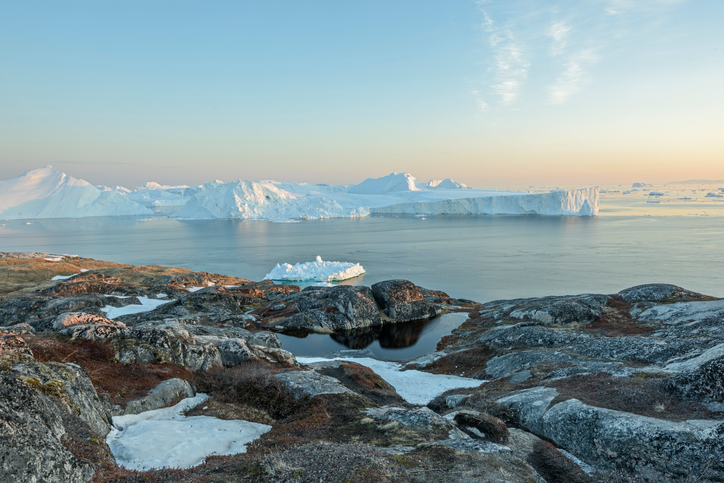The U.S. is losing the race for the Arctic

The Arctic is up for grabs.
Whatever the reason, global warming or not, man-caused or just an Earth cycle, permanent sea ice in the Arctic has shrunk by more than half.
Mineral wealth once locked away beneath that ice is now accessible. And nations are scrambling to claim a share of that wealth.
Five nations have Artic Ocean borders. But far more are vying for a share of the billions of barrels of oil – and even more natural gas – about to be unlocked.
Why such a mad scramble? Because most of the Artic Ocean is considered high seas. Like the middle of the Atlantic, no one nation has an exclusive claim. It’s first come first served… and the U.S. is losing the race.
Russia moves ahead
According to 2013 U.S. estimates, the Arctic Ocean covers vast oil and gas reserves. Up to 15 percent of the world’s remaining oil… and nearly a third of its natural gas deposits. Whoever taps into these deposits will have guaranteed energy for years to come. Or plenty to sell to the highest bidder.
Russia currently leads the race. The U.S. has a single seaworthy heavy icebreaker – and it’s aging. Meanwhile, Russia boasts a fleet of nearly 40 icebreakers, including two gigantic new nuclear-powered breakers. The U.S. won’t have another icebreaker built until 2020 at the earliest.
The Russian military has been busy, too. Moscow has taken Soviet-era Artic bases out of mothballs. And they’re busy building more. Last year’s “Arctic Trefoil” is the second of six new military bases Russia plans for the high Artic.
Russia has an active high Arctic oil field, too. It produces about 5.5 million tons of oil per year. They’ve built undersea robots and unmanned subs to find other likely drilling spots. And a new super-sub – the Belgorod – is under development for Arctic exploration.
At 600 feet, the Belgorod will be the largest nuclear sub ever built. Among its many features, it will serve as a “hub” for smaller subs, both manned and unmanned.
In all, Guggenheim Partners estimates Russia has $300 billion in completed, current, and planned Artic projects. Far more than any other nation.
China closing in fast
In January of this year, China announced a blueprint for an “Artic Silk Road.” The plan includes developing Arctic shipping routes, partnership infrastructure projects, fishing, and tourism.
A lynchpin of China’s strategy: Investment in other nations’ projects. For a piece of the Arctic pie, of course.
China’s biggest move so far has been major investment in Russia’s Yamal Peninsula liquefied natural gas (LNG) project. The facility recently shipped its first tanker of LNG to Britain.
As one of the world’s leading energy importers, investment in Artic projects is an obvious strategy. The Yamal project is slated to provide China with 4 million tons of LNG annually.
Chinese moves to establish a claim in the far north include the purchase of an icebreaker in 1993… agreements to establish Artic research stations in Iceland and Greenland… and achieving “observer” status in the Artic Council – a group of nations with Arctic territory.
Meanwhile, U.S. Artic interests languish.
Challenges to U.S. Arctic progress
The U.S. faces several challenges in the race for Arctic riches.
Paying for two long-running Mid-Eastern wars has drained our resources. Environmental laws slow the pace of energy development. And, according to Alaska senator Lisa Murkowski, much of the lower 48 sees the Arctic as “an Alaska problem.”
Out of sight is out of mind for most of the short-sighter congressmen and women who can only see up to the next election.
The result is a growing Russian dominance in the Arctic – with China taking steps to catch up. Without a change in our current path, the U.S. may well find itself playing third fiddle in this resource-rich region.
Sources:


No comments:
Post a Comment